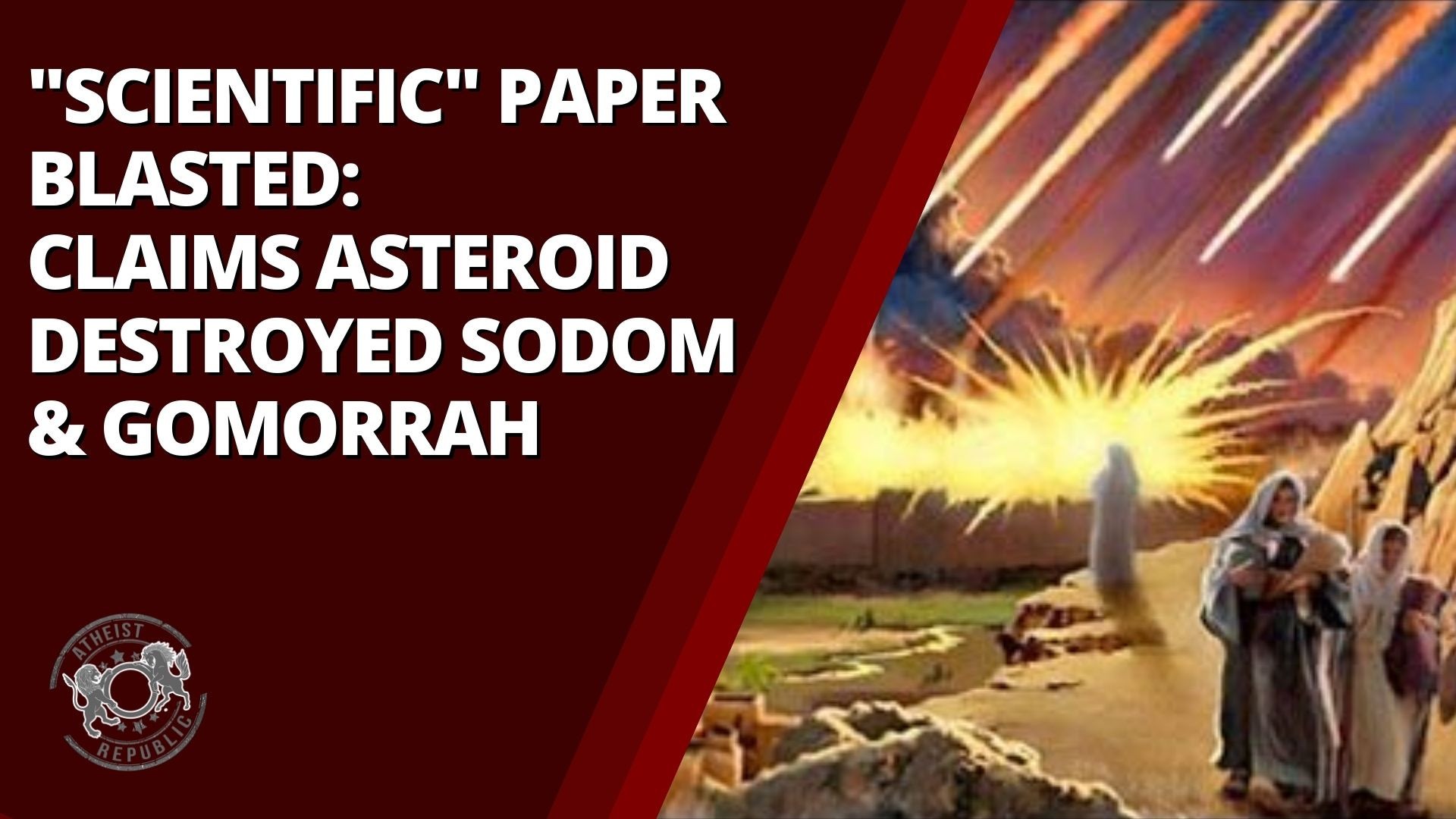
Critics blasted a study published in the online journal Scientific Report on September 20, 2021. The study, "A Tunguska sized airburst destroyed Tall el-Hammam, a Middle Bronze Age city in the Jordan Valley near the Dead Sea," presented a seemingly innocent and legitimate scientific venture.
The next day after the study was published, Mark Boslough from Sandia National Laboratories gutted the Scientific Report for delving into pseudoscience. Posting on Twitter, Boslough announced that "a paper published today asks the question "Did God smite the sinners of Sodom with an asteroid?"
The prestigious international journal @Nature has expanded its scope beyond science and is now publishing papers in the field of Biblical archaeology. A paper published today asks the question "Did God smite the sinners of Sodom with an #asteroid?" https://t.co/ZNvkkgrnS1
— Mark Boslough (@MarkBoslough) September 20, 2021
The study's authors created a seemingly compelling narrative supported by computer-generated simulations of airbursts and various data from decades of excavations in the area. The abstract opened with a bold claim saying that they "present evidence that in 1650 BCE a cosmic airburst destroyed Tall el-Hammam, a Middle-Bronze-Age city in the southern Jordan Valley northeast of the Dead Sea."
Tall el-Hammam is a Bronze Age city that most creationists and biblical archeologists believe to be the city of Sodom, the same city destroyed by God in the bible. The authors provided a disclaimer saying that Sodom's demise is "beyond the scope of this investigation." They did fancy the idea that a "cosmic object might be the source of the written version of Sodom in Genesis."
The gravest mistake the authors of the meteor theory for Sodom's destruction made was using Mark Boslough's model of asteroid airburst. The physicist snarkily referred to it as "the mechanism by which God smote this evil city."
Boslough's tirade continued unresponded by any of the authors. Other experts who caught wind of the controversial study started dissecting the supposed facts and credible science the authors carried out. Matthew Boulanger, an archeologist and lecturer at Southern Methodist University tweeted a step-by-step explanation of why the study's carbon dating is incorrect. "The authors seem to have no clear understanding of what Bayesian modeling of 14C dates is," Boulanger exclaimed in one of his tweets.
9/10 This is also NOT a "Bayesian-modeled age" as the authors claim. The authors seem to have no clear understanding of what Bayesian modeling of 14C dates is. There is no "model" in the paper, just a presentation of computer output that supports their preconceived notions.
— Matthew T. Boulanger (@MTB_Archaeology) September 22, 2021
Megan Perry, Professor of Biological Anthropology at the East Carolina University, stated that the authors had "a clear objective to prove elements of the Bible actually occurred." She compares the study to "trusting a publication demonstrating the efficacy of a drug that was paid for by the drug manufacturer."
Normally this would not be a problem, but in the case of this excavation, where the director has a clear objective to prove elements of the Bible actually occurred (otherwise he will lose his 1 million dollar endowment), this is a huge cause of concern. 10/
— Dr. Megan A. Perry, professional cynic (@petrabonegirl) September 23, 2021
As of the writing of this article, the study had reached 272,000 article access and has been mentioned mostly by religious news outlets and websites.
